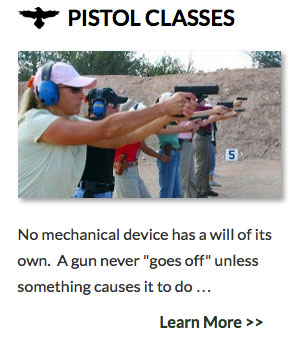Widgetized Section
Go to Admin » Appearance » Widgets » and move Gabfire Widget: Social into that MastheadOverlay zone
The Zimmerman Verdict – A Huge Victory for Self-Defense
 I want to make some quick points on the Zimmerman not guilty verdict, which I’ll be elaborating on this week’s DOWN RANGE Radio.
I want to make some quick points on the Zimmerman not guilty verdict, which I’ll be elaborating on this week’s DOWN RANGE Radio.
1) Justice has been done, but George Zimmerman will never get his life back. Every one of us who carries every day needs to understand that. There is a price to be paid, even if you’re 100% right! And Zimmerman’s ordeal is not over yet. I strongly suggest you read this Breibart account of a worst case.
2) As I said in the beginning, the case pivoted on whether there was one incident, initiated by George Zimmerman and ending in the death of Trayvon Martin, or 2 incidents, the second initiated by Trayvon Martin and ending in his death.
3) The prosecution failed in their blunt attempt to equate the right of self-defense with the extent of injury suffered by the victim. The “reasonable person” doctrine prevailed.
4) What the jury was not allowed to see, the tweets, the social media, from Trayvon Martin showed the 17 year-old to be a wannabe thug, a doper experienced in fighting — including one fight he lost because he was taken to the ground and pounded MMA style — and looking for a gun. Rather than the “accidental tragedy driven by race” scenario still be presented in the MSM, given all the evidence it is not irrational to speculate that Martin saw an opportunity to “make his bones.” And he took that opportunity. The learning point here is that we cannot know what is in someone else’s head…the young man walking toward you might indeed be an angelic choirboy…or he may not. This may be the day that angelic choirboy decides to become a full-fledged gangsta, and you’re “it.” Based on this, do we ever drop our eyes, turn our back, lose sight of the (however remote) threat?
5) As stated by myself, Michael Janich, Mike Seeklander, Marty Hayes and Rob Pincus in virtually every episode of THE BEST DEFENSE, if we are truly serious about our self-defense, we need to get beyond, “When all you have is a hammer, everything looks like a nail.” Adding empty hand, improvised weapon, stick/pen/cane, even knife skills to your “tool box,” gives you options. Skill buys options! You may indeed end up in the gravest extreme and have to go to the gun, but it will be because all your other options failed.
6) You MUST be able to articulate exactly what happened, exactly what steps you took and why you had no choice but to resort to lethal force. This is not an optional step. The entire remainder of your life hinges on your ability to articulate why you acted as you did. George Zimmerman did a lot of things wrong, but in the end he was able to explain quite clearly why he did what he did, and the evidence backed up his story.
7) As Zimmerman stated, when Martin began reaching for Zimmerman’s gun, it wasn’t Zimmerman’s gun or Martin’s gun, it was “the gun.” All of us who carry fully understand that in any altercation we are involved in, there is at least one gun present — ours. In my very first formal self-defense course while trying — unsuccessfully — to get a license to possess a firearm in New York City back in the mid-1970s, my instructor, an NYPD detective, hammered away on the fact that if you have a loaded gun on your person, you cannot give up the gun. If you do, that gun will almost certainly be used against you. On DOWN RANGE Radio, I’ve talked extensively about the concept of “gun sense,” being aware of the gun and its position relative to you and a potential threat. The TBD guys have talked about distance between you and the potential threat, and as much as possible keeping or adding to that distance. If you are in arms-reach of your assailant, the hot zone, there is always the risk that your gun is in play! See Point 5.
8) Violence is quick and brutal. We have been conditioned by television and movies (and, yes, some of our own training) to see violence as a sort of step-by-step process in which each step is telegraphed by the previous step…first “A,” then “B,” etc. We imagine this will give us the opportunity to ramp up our own defenses and be ready to respond. Instead, the first hint you might get that you’re in a fight for your life is the punch to the face that drives you to the ground.
9) There are limits to situational awareness. Yes, it is your first line of defense, but no defense is 100%. You have to have a plan, a mental index card, that programs your response when situation awareness is either not applicable (last year’s TBD “Restaurant Beat-down,” for example) or fails.
10) You must have a plan for AFTER the incidence. You are going to have to interface with the legal system, and that system does not give a damn about you. We’ve been talking about this a lot, but read this piece from John Farnam on what to say to the police, which is consistent with our teachings on TBD:
So, here is my advice when confronting arriving police in the wake of a lethal-force incident:
• Palms out at chest-level, no weapons in sight:
1) “Officers, thank God you’re here!”
2) “I’m the one who called.”
3) “Those men:
(a) attacked us,
(b) tried to murder us.
(c) We were in fear for our lives”
4) “I will sign a complaint.”
5) “I’m happy to chat with you when my lawyer is present. I absolutely request my attorney, and I am respectfully invoking my 5th Amendment Rights to decline to answer any questions until he is personally present, sir.”
It is appropriate to call officers’ attention to:
(a) evidence that may not be obvious,
(b) witnesses who may not be obvious,
(c) danger that may not be obvious (eg: an armed suspect still in the area)
Always be polite and non-threatening, but take a deep breath and speak clearly. Don’t mumble and don’t become chatty.
Finally, when you are “Mirandized,” the officer will probably ask you, “Do you understand your rights, as I’ve explained them to you?” The best answer is, “Officers, I’m not answering that question, nor any other, until my lawyer is here, nor will I sign, nor initial, any document.” We could go on for many more pages, but the foregoing pretty much sums it up. You must protect yourself, as no one else will!
Granted, these are things none of want to think about. We always see ourselves as “the good guys,” and we want the other good guys, the cops, to see us in the best light. Unfortunately, that urge for others to see us as “the good guys” is the rope we will use to hang ourselves. As I said on the podcast last week, the heads of the IRS “Took The 5th” before Congress. It is your right! Exercise it!
John, who is a genius on this stuff, BTW, also discusses asking to be transported to the hospital after a lethal force encounter, as I mentioned in last week’s podcast. You have just had the worst experience of your life…your heart is racing…you feel light-headed…you may or may not know how badly you have been injured…I think the emergency room is indicated. Best case, ask your lawyer to meet you there.
11) Have a lawyer to call! I do, and I carry that number on my person and in my phone. This is going to cost you some money, but so did the gun and the training. Meet with a criminal lawyer in advance, explain your situation as an armed civilian and that you would like to be able to contact him or her after an armed encounter.
12) DO NOT WALK INTO THE FAN IF YOU DON’T ABSOLUTELY HAVE TO! Burn this into your psyche and remember it every time your put your gun on in the morning! You do not have an invincible uniform with a great big “S” on the chest under your street clothes. You do not have a badge nor have you taken an oath to defend the public. You are not a “sheepdog” protecting the flock. Yes, every one of us has read Lt. Col. Grossman’s essay, perhaps many times, but think this through. Our “job” is not to protect the public, but to protect those under our “umbrella” and ourselves, first and foremost. There are exceptions, and we’ve discussed them at length in the TBD active shooter scenarios, but we need to think long and hard about intervening in any situation where we are not in possession of 100% of the facts (which is, indeed, most situations).
If we feel we must intervene in a questionable situation, we need to do so at the lowest possible level. Call the police and pay close attention to everything around you so you can be a good witness; video the situation from a distance; stay on the phone with 911; shout that the police are on the way; in short, exercise all your options before you step into the fray. Because when you commit, you must commit 100%, or you find yourself on the ground with your head bouncing off the concrete.
13) TRAIN! The skills don’t come in the box with the gun. The skills don’t come from watching TBD or reading what I or Marty or Massad or Rob write. Skills come from your commitment and nowhere else.
Okay…that’s all for now.
Oh yeah, we ALL need to be in DEFCON 1 until the fallout from the Zimmerman verdict settles down. To borrow again from John Farnam, don’t do stupid things with stupid people in stupid places. Stay safe out there!



 MidwayUSA
MidwayUSA Ruger Firearms
Ruger Firearms SCCY Firearms
SCCY Firearms Streamlight
Streamlight Action Targets
Action Targets Gunsite Academy
Gunsite Academy
You must be logged in to post a comment Login